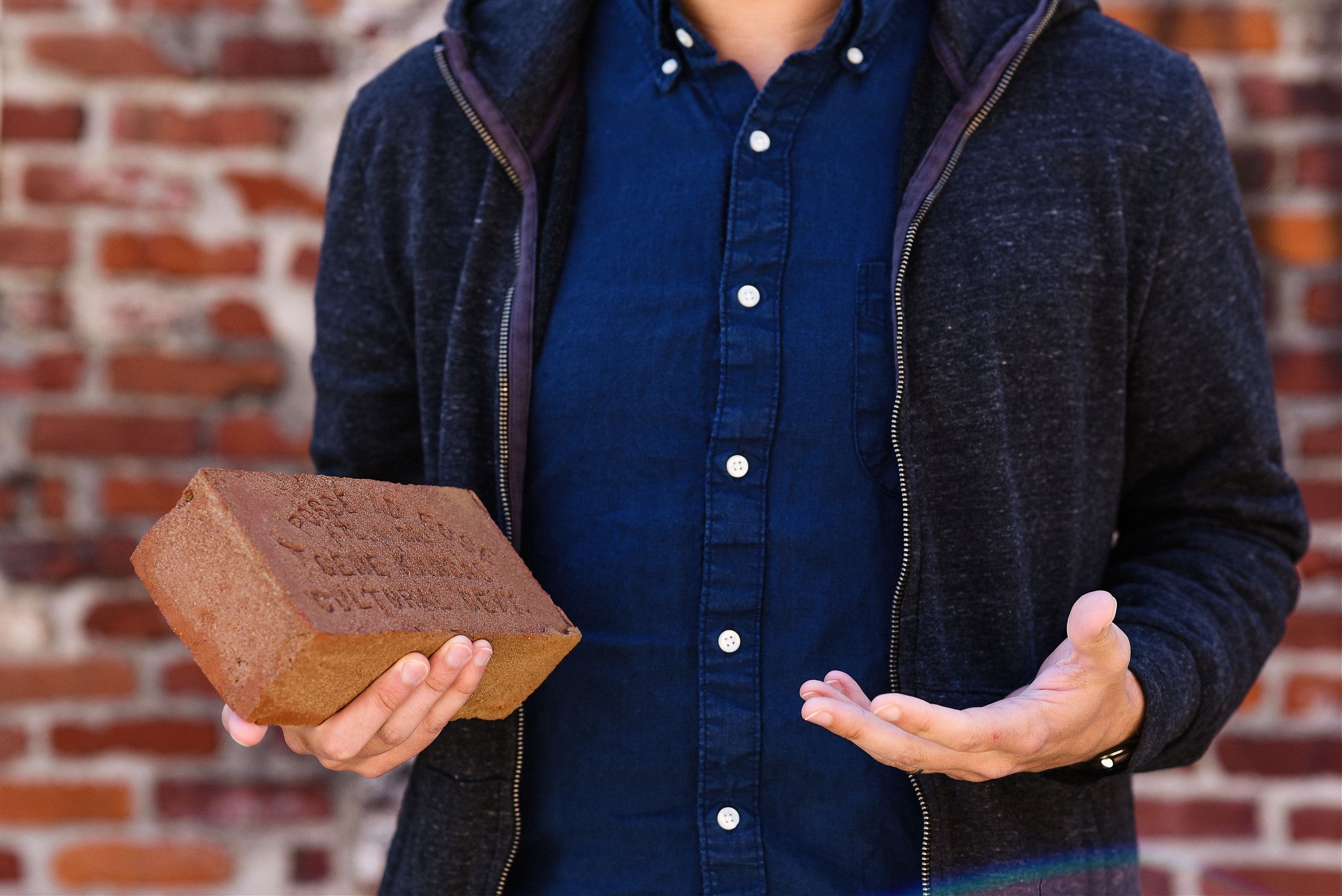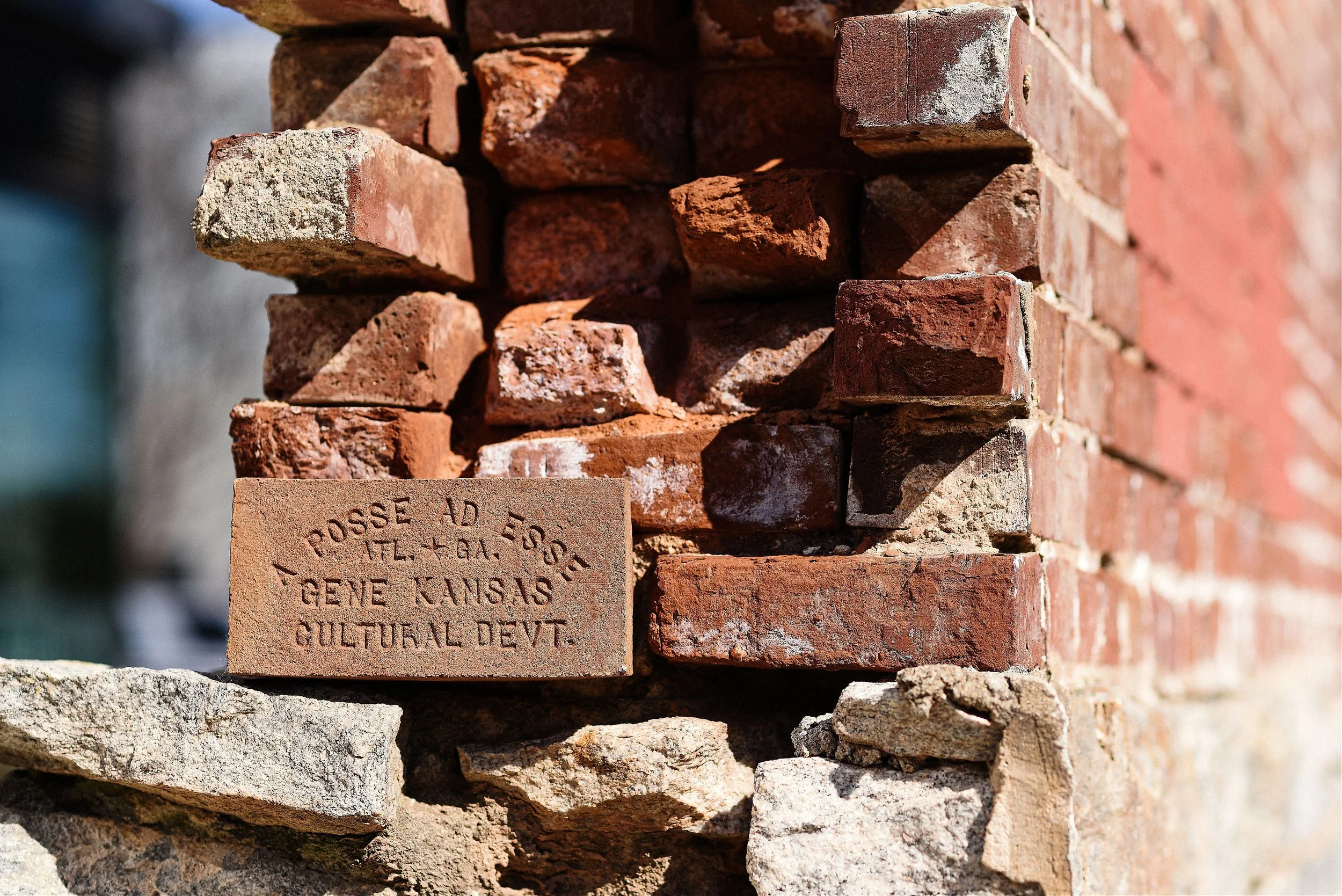
Every creative endeavor represents tension between the possible and the practical, a hypothesis testing what can be dreamed against what can be done.
What sets apart projects that are destined to fly from those that are doomed to fail is determined effort, driven by the vision of those bent on making something from nothing.
Each cultural development Gene Kansas | Commercial Real Estate undertakes — whether a jazz night, author talk or the preserved building that hosts it — deserves its own acknowledgments section, a place to recognize individuals who displayed the extraordinary perseverance that making something new always requires.
Buildings often commemorate completion, from topping-out ceremonies to bronze plaques and engraved mason’s cornerstones. The latter in the list provided the seed for Gene Kansas’s idea of honoring those essential to a building with a permanent proclamation lodged in its structure.
“I didn’t want it to just be another plaque,” he says. “The idea was, how could we do something that could become a part of the building?”
That’s where the project became itself a collaborative, creative endeavor, as Kansas brought in design firm (and Constellations community member and tenant) Proper to help flesh out visual ideas of a building marker. The brainstorm eventually led to the historic bricks that baked dates of establishment into structures and streets.
And then it took another conceptual leap to the more abstract concept of recognizing a completed work.
“The brick became a marker for fruition, whether it actually goes into a building or not,” says Proper’s Jonathan Lawrence.
Lawrence and creative partner Jason Orme put together inspiration from historic cities like London and college campuses like Yale. Orme, whose father happened to have spent a career managing a brick company, had special insight into the form — and how difficult it would be to make something so mundane also stand out as a sturdy certificate of exceptional achievement.
Bricks are “incredibly ubiquitous but can be very different from each other, and they’re also the most basic building block in masonry,” Kansas says. So individuality had to blend with a sense of being part of a whole.
“You very rarely see bricks in solitude; they are used in conjunction with other bricks to create something larger and of use,” Kansas says.
The brick’s structure and size also imposed restraints. When oriented on its side, as it would be positioned in a wall, the surface area for messaging shrunk even further.
“When you’re putting something in stone, there has to be a certain level of simplicity to be able to achieve a nice result. The brick doesn’t really allow you to do anything too complicated or intricate or detailed because it’ll get lost or break or fade,” Lawrence says.
Kansas had been ruminating on the idea of the brick after visiting Tuskegee Institute, where an essential element of the education in engineering was for students to make their own bricks. This idea of learning by doing happened to reflect the same motto, inscribed in Latin, that adorned Kansas’s high school alma mater, Isidore Newman School, in New Orleans. Latin has also been important at Constellations, where Sol omnibus Lucet — the sun shines upon on all — serves as one of its primary values.
Proper’s Orme and Lawrence thought, why not continue with the classical appeal and brevity that Latin provides?
They landed on A Posse Ad Esse – From Being Able To Being – which could also roughly translate to the fundamental principle of Gene Kansas | Commercial Real Estate: Demonstrating what’s possible.
It fell to Helen McGaughy, project associate, broker and all around renaissance woman, to make the brick happen in this way, bringing the bespoke sensibility that Proper envisioned to a product that over time had become a commodity over a craft.
“My dad sold brick his whole career and when it got down to this level, I started calling him like, ‘Do y’all do this? Who does this?’ And he’s like, ‘No, nobody does this anymore,’” Orme says.
McGaughy, who Kansas calls the GK “head of forensics” for her prowess in delving into details and building records and historical documents, wouldn’t be deterred.
“I ended up contacting over 50 companies — I contacted every (on the Internet) handmade brick company in the U.S. and a couple in Canada,” McGaughy says. “I got far with a lot of them, but it was either the amount of bricks they needed, the time frame, or some weird logistical issue — or they would attempt and it wouldn’t work out, because we wanted stamped, inset, crisp lines, but handmade.”
She went as far as to make a 3D-printed mold for one company based on Proper’s design, and even that didn’t pan out.
Finally she happened upon the Old Carolina Brick Co. in Salisbury, N.C., where the proprietor found the right formula.
“He ordered letter stamps to essentially put inside a mold and made the bricks one brick at a time,” says McGaughy, who drove there to have the first order of 250 bricks forklifted into the back of her SUV.
Helen McGaughy, preservationist and one-of-a-kind leader!
Now, each brick has a bit of a different coloration, but the same message: A Posse Ad Esse, ATL * GA, Gene Kansas, Cultural Devt.
For Kansas, the process of creating the brick exemplified the kind of effort that merits such recognition.
“Without the people you don’t have a project, and this is about recognizing leaders: You have to really earn one of these.”
McGaughy fittingly took home the first brick, complete with a bronze plate affixed to the back with engraved language outlining her achievement and adding a bit of customization to the memento.
Since then, other GK team members have received bricks — Ted Bradford for his work on the VA-HI Building preservation in Virginia Highland and Brooke Morris Rasheed for her event-planning expertise — along with community partners and clients like Scott Stern at Highland Real Estate, who displayed perseverance in rebuilding (fittingly) a brick wall, also at the VA-HI Building. Also, David Minnix, for his leadership with Indie Studios and the incredible effort and creativity that went into that award-winning cultural development. Kansas plans to use the remaining bricks to amplify other creative achievements and leaders around town.
“When we think about cultural development, it’s just really doing our best to create more culture, and buildings have this opportunity to house that culture and be the conspicuous reminder of the stories that occurred there, also known as history.”
Of course, beyond the symbolism, there’s a superficial appeal as well, Kansas says.
“It’s just fun and cool.”





